My experience at the ISC in 1966 |
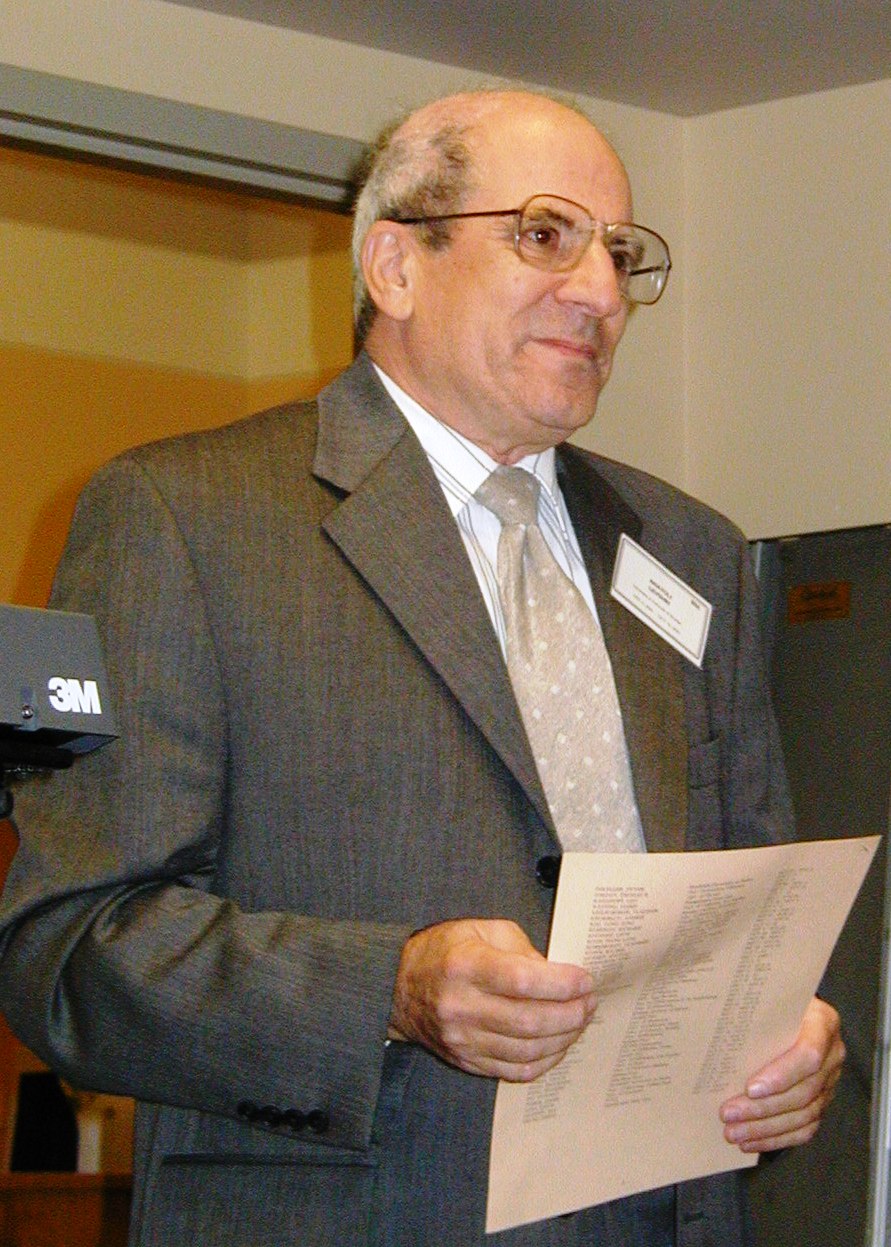 |
Notes from Dr Anatoli Levshin
Received: 29 April 2012
Introduction
Recently, during the 2012 Annual Meeting of the Seismological Society of America in San Diego, Dr. Dmitry Storchak invited me to write what I can recall about early days of the International Seismological Centre. I did my best to revive in my memory the recollections of my work at the ISC 46 years ago.
Firstly, a few words about myself. I was born in Moscow in 1932 and lived there for almost 60 years. For the last twenty years I have lived in Boulder, Colorado, USA. I graduated as a geophysicist from the Geological Department of the Moscow State University in 1954 and spent 7 years applying seismic prospecting techniques for civil engineering projects. In 1962, after getting the PhD in geophysics from the Institute of Physics of the Earth (IPE), Soviet Academy of Sciences, I joined the Laboratory of Computational Geophysics at this Institute. This Lab later became a Department, and much later a new Institute. The Chief of the Lab was Professor Vladimir Keilis-Borok, the rising star of the computational geophysics. During sixties my colleagues and I dedicated a significant part of our time to the computerization of seismological data processing in the USSR including hypocenter location and related tasks. During his visit to Great Britain Prof. Keilis-Borok met Dr. P. Willmore and informed him of our work. Dr. Willmore was strongly interested in what we were doing as he had recently become the Director of the International Seismological Centre (ISC) in Edinburgh, Scotland, whose goal was to process and publish seismological information from all seismic agencies around the world. One of the results of their talk was an invitation from Dr. Willmore for me to come to Edinburgh and work with his colleagues for 6 months to develop new software for data processing.
I had never been abroad before and did not belong to the Communist Party. Overcoming great difficulties Keilis-Borok managed to get the permission of the Academy of Sciences to send me to the ISC for 2 months in the company of the famous Soviet seismologist and Party member, Dr. Nadia Kondorskaya, who was responsible for the Soviet Seismological Network. She represented the USSR at the board of ISC and was invited by Willmore to stay for 2 months at the ISC.
Later, due to the efforts of V. Keilis-Borok and N. Kondorskaya I received (near the end of my two-month stay) permission from the Academy of Sciences of USSR to work at the ISC an extra 4 months.
We arrived in Edinburgh in the beginning of March of 1966. The Centre occupied a nice old building at 6 South Oswald Road. Dr. Willmore brought me and N. Kondorskaya to the Centre and introduced us to the staff.
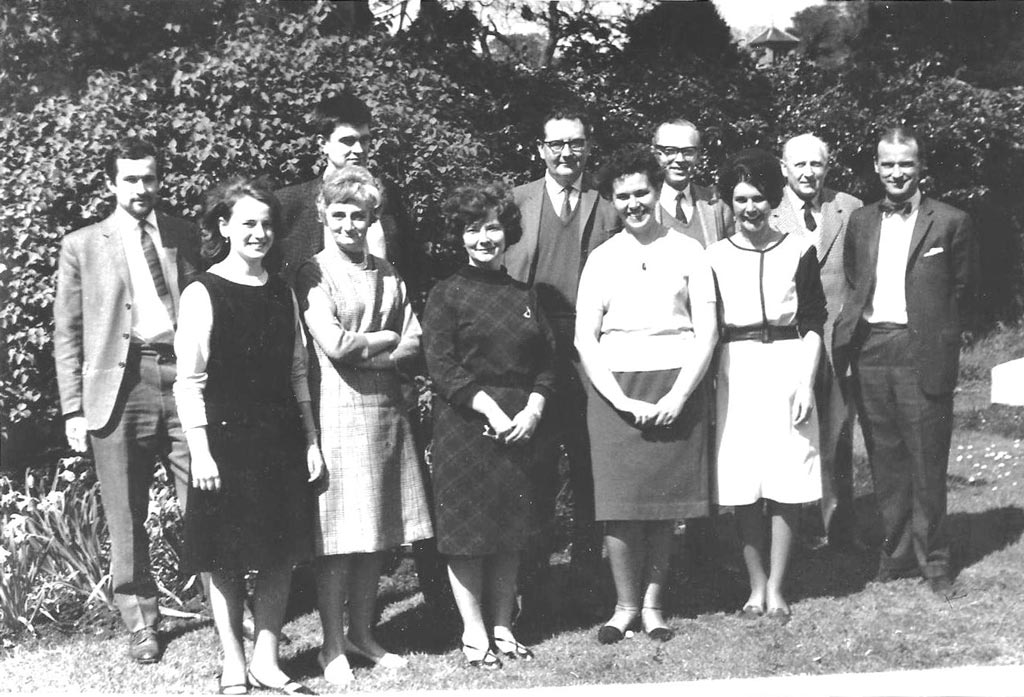 |
| Picture 1: front row, left to right: Margaret Dignan – technician, Betty Poley – secretary, Beryl Scott-Barrett, Nadya Kondorskaya, Annette Fluendy; back row: Stuart Crampin, David McGregor, Patrick Willmore, Edward Arnold, Jack Gulley, Raymond Parks. |
There was Dr. Edward Arnold, the former student of Harold Jeffreys, the leading program developer; David McGregor and Annette Fluendy, programmers; Beryl Scott-Barrett, the bibliographer; Mr. Jack Gulley, responsible for administrative duties; Ms. B. Palet, secretary, and Margaret Dignan, a technician. There were also several scientists belonging to the seismological unit at Edinburgh University also headed by Dr. Willmore, namely Stuart Crampin and Raymond Parks. After this welcome meeting Dr. Willmore took me to his office and suggested that I write the program for identification of later phases reported by seismic agencies, based on an algorithm developed by our group in Moscow. I should mention here that it was to be my first program written in FORTRAN, as in Moscow at this time we used only computer codes.
The main difficulty at this stage was the absence in Edinburgh of proper computing facilities where we could debug and test our programs. So soon we started making regular trips to the computing centre in Birmingham (England). Ed Arnold and I spent evening and night times debugging and running our programs at Univac computers there. A local programmer in Birmingham tried to help us by phone calls to Edinburgh but to understand his heavy midlands accent was behind my abilities.
Later we used computer facilities in East Kilbride (Scotland).
Meanwhile, the activity at the Centre went on. One week in the spring of 1966 was especially remarkable when imminent members of scientific community gathered for a meeting at the ISC. There were famous seismologists from different countries of the world including, if I still remember right, Keith Bullen, Jack Oliver, Vit Karnik. This was a great event for me, a young seismologist, to be able to meet and talk with such prominent scientists.
In the middle of the summer our programs started to work, and the first drafts of the ISC bulletins were created. My program had fitted well into the general package of the data processing developed by Arnold, McGregor and Fluendy. The algorithm and some examples of its output are described in the paper by E. Arnold et al.1). The Centre was visited by the international group of seismologists who participated in the Symposium on Computational Geophysics in Cambridge including E. Flinn, M. Shimshoni, C. Alterman and other prominent scientists.
At the end of my stay in Edinburgh the Centre received an important addition to the staff. Dr. Slawomir Gibowitz from the Polish Academy of Sciences became the Deputy Director of the Centre. I left Edinburgh in the middle of September 1966 after a warm farewell party and returned to Moscow with the feeling of fulfilled duty and very precious memories of my colleagues at the ISC. During my work in the Centre I received great help from the people there and developed a permanent friendship with them. Dr. Willmore visited IPE in Moscow and together we made a tour to see the seismic stations at Crimea and West Caucasus. I had pleasure to invite Ed Arnold and Beryl Scott-Barrett to my home to Moscow during an IUGG meeting. Later, in 1977, I visited the Centre (which moved to Newbury), and had pleasure to meet Dr. A. Hughes, and old friends David McGregor, and Beryl Scott-Barrett. Stuart Crampin remained one of my closest friends since that time.
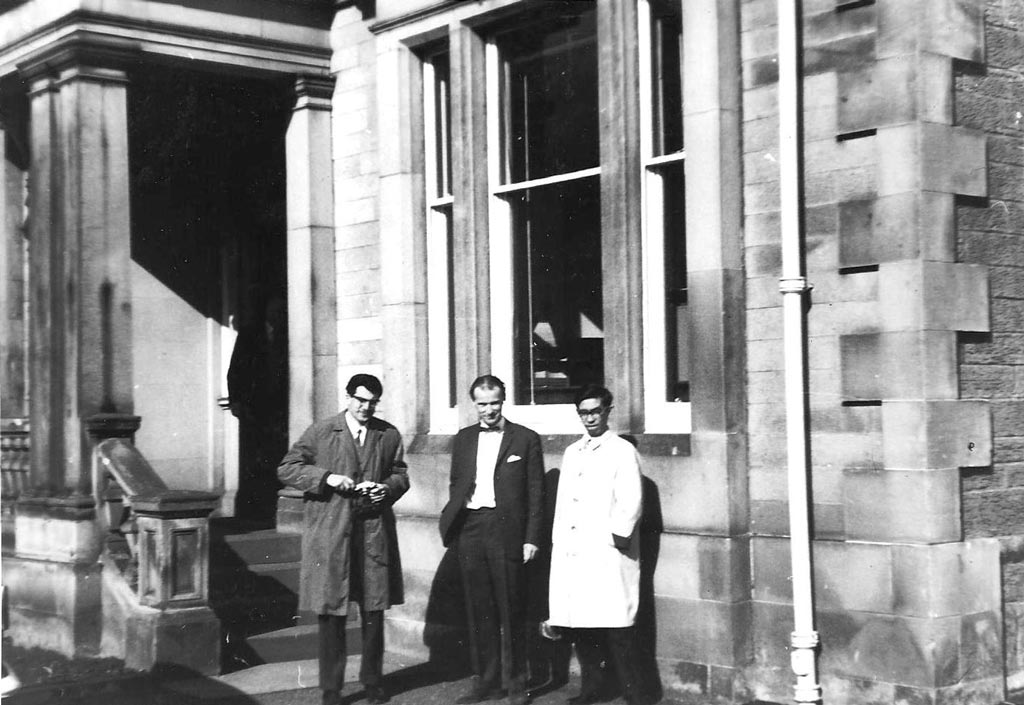 |
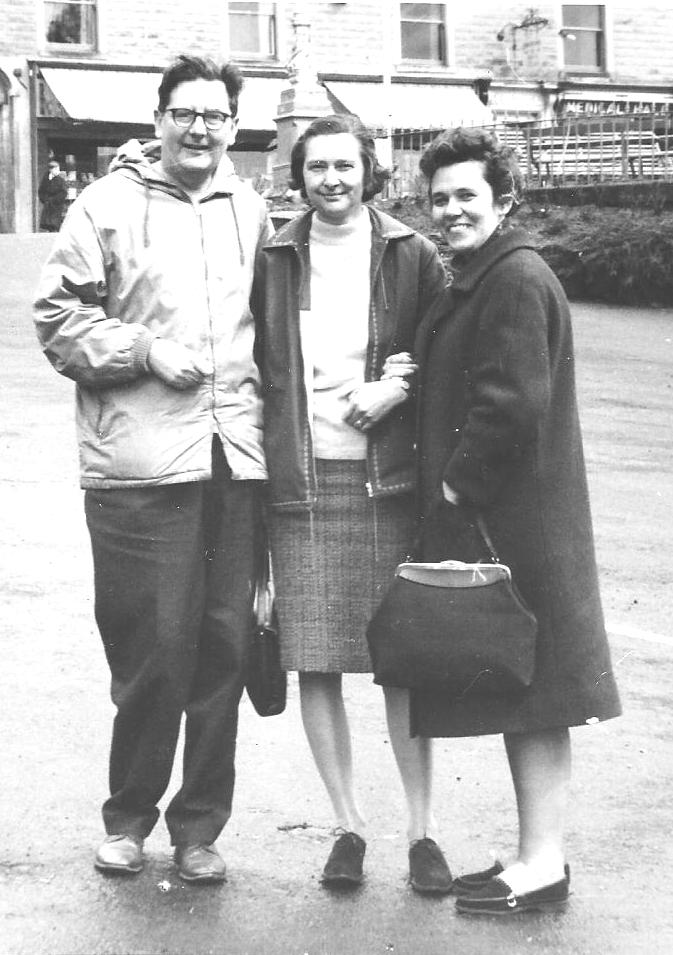 |
| At the entrance to the ISC: A. Levshin, R. Parks, Dr. Ichikava – visitor from Japan | P. Willmore, Mrs. Willmore, N. Kondorskaya |
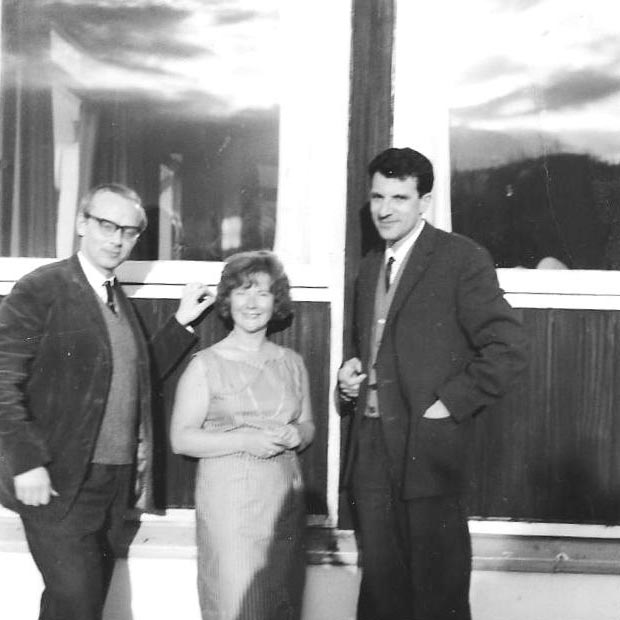 |
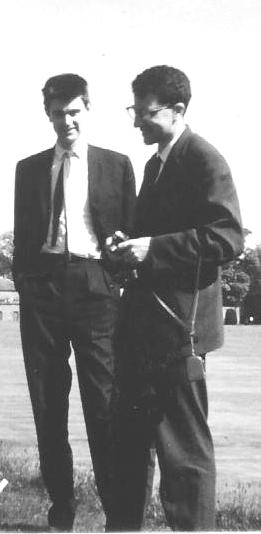 |
| E. Arnold, B. Scott-Barrett, A. Levshin | D. McGregor and A. Levshin |
1)Arnold, E.P., Keilis-Borok, V.I., Levshin, A.L., Pyatetskii-Shapiro, I.I., Willmore, P.L., 1972. Automatic identification of seismic wave arrivals. In Computational. Seismology (ed. Keilis-Borok V.I.), Consult.Bureau, N.Y. - London, 25-31.
Other stories on the ISC history

